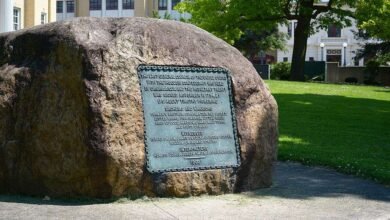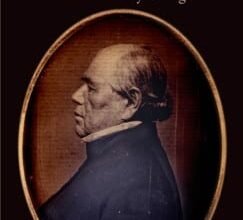Dawson’s: The Alplaus Kill’s Last Mill


 Local historian W. Bronson Taylor once observed that the three essentials of the early pioneers of western Saratoga County were “a grist mill, a sawmill, and whiskey still.” While there is little mention of stills, Taylor’s point about the mills is borne out in historical records time and time again.
Local historian W. Bronson Taylor once observed that the three essentials of the early pioneers of western Saratoga County were “a grist mill, a sawmill, and whiskey still.” While there is little mention of stills, Taylor’s point about the mills is borne out in historical records time and time again.
In the town of Charlton, one of these early mills was built by William Dawson on the Crabb Kill, not far above where it enters the Alplaus Kill. Brought into operation as early as 1785, mills would run on this property for the next 120 years.
William Dawson was born in England in 1762. It was in the English village of Lanchester that he married Jennet Monteith and where in 1780 they had their first son, John. During the next four years, they emigrated to America and purchased property along the Alplaus Kill. Soon after arriving in the area, they had another son, William, followed by James in 1787, and a daughter named Jane two years later.
Kill was the Dutch term for creek and Alplaus is believed to have been a modern corruption of Aal Plaats, place of eels. The kill originates in Glenville in Saratoga County and flows south into the Mohawk River at the small community of Alplaus.
(As mentioned in God Bless You, Mr. Rosewater, Kurt Vonnegut lived in Alplaus when he worked for General Electric in the late 1940s and served as a member of the Alplaus Volunteer Fire Department.)
The home that William built for his family was a 22 by 34-foot structure built in the saltbox design. While over the years this building was moved and repurposed, as late as 1959 part of it was still standing and being used as a barn. Along with their home, William also built a sawmill and the other necessary outbuildings.
When William passed away in 1822, control of the mill was passed on to his oldest son, 42-year-old John, who became known as John Sr. at the birth of his third son, John, Jr.
After John Dawson, Sr. passed away in 1853, John Dawson, Jr. took over management of the mill. In 1858, he began making plans to enlarge the milling business, leaving the original mill site on the Crabbe Kill, and rebuilding further downstream on the Alplaus Kill.
In the Autumn of 1859, Barrett’s Mill, located just South of the Dawson Mill, burned to the ground. Evidence at the scene seemed to point to arson as the cause. Without local authorities investigating, the neighboring farmers began collecting clues.
One of the most visible was a set of footprints coming from the Dawson homestead. Even more incriminating were the prints themselves, as ones showing an out-turned foot were identified as being that of John Dawson, Jr’s twenty-three-year-old son Simon. On October 20th, the Lansingburgh Democrat gave this report of the incident:
“John, Jr. and Simon Dawson, father, and son, mill owners in Schenectady [sic], are held there on a charge of firing a grist mill run by another party. The evidence is very flimsy and consists only of known business rivalry, and the footprints found around the building where the fire was kindled corresponded with those made by their boots.”
John was released within a couple of weeks, with Simon being held for trial. Though ultimately found innocent, Simon was not let off as easily by some members of the community. Tired of harassment from his neighbors, in the 1860s he moved West with his wife and children, finally settling in Kansas where he passed away in 1908. With Simon gone, John Jr’s son George Harmon Dawson stepped in to work beside his father in the family business.
This was not the end of the story. In the fall of 1869, nine years after the Barrett Mill fire on the very weekend that the Dawson Mill insurance policy expired, a fire was discovered in the grist mill’s stairwell.
With the smell of kerosene filling the air, the Dawsons tried in vain to extinguish the flames. Years later, a man on his deathbed confessed to torching the Barrett Mill after being refused credit for a bushel of corn.
John Jr. and his son George soon began the work of rebuilding their milling business. To expedite the process an existing mill was brought in from a farm in Schenectady that is now part of the General Electric complex and set up below where the Crabb Kill and Alplaus Kill merged. One account of the move noted that it took only three weeks to get the building moved and the mill again in operation.
In the spring of 1875, while working in this sawmill, John Jr. slipped in front of the blade and had his foot cut off. His severed appendage then flew free of the saw, landed in the millrace, and was washed down into the stream.
Those nearby helped stop the bleeding and he was quickly taken to a doctor. It is part of local lore that some morbid individuals spent time searching for John’s foot, with someone finally succeeding in locating the severed limb.
After losing his foot, John no longer worked in the mill and instead set up a cobbler’s shop on the mill’s second floor. Here he continued in that trade until he died in 1889. The mill was converted to a gristmill after the accident with George taking over management.
After operating the mill for the next thirty-two years, George Harmon Dawson passed away in October of 1907. At that time his twenty-nine-year-old son Burton (Bert), who had been working as a railroad brakeman, took over management of the mill.
Bert continued to work away from the mill, leaving the day-to-day operation to others. In December of 1911, William Barnett, who had been running the grist mill in his absence, broke his leg in two places when it was caught in machinery.
A year after this accident, W. Bronson Taylor acquired the mill property from Bert Dawson, with the Dawson family moving to Scotia and Bert taking employment as a machinist at General Electric.
Bronson Taylor, in later years known as the “Miller of the Alplaus,” was the last person to operate a mill on the Alplaus Kill and ended its operation in 1941. At that time Taylor removed the iron from the mill for scrap to support the World War One effort and finally sold most of the grist-mill machinery to the Cromie brothers of Charlton in the 1960s.
Illustration: A model of Alplaus Kill’s Dawson Mill courtesy of John Cromie.
Source link




